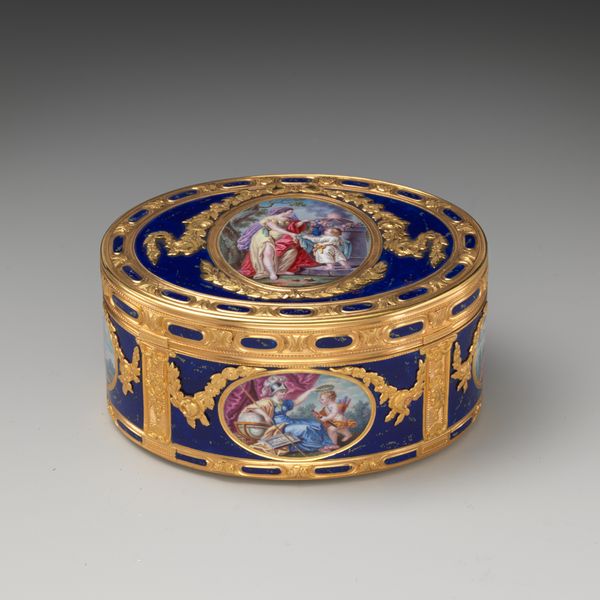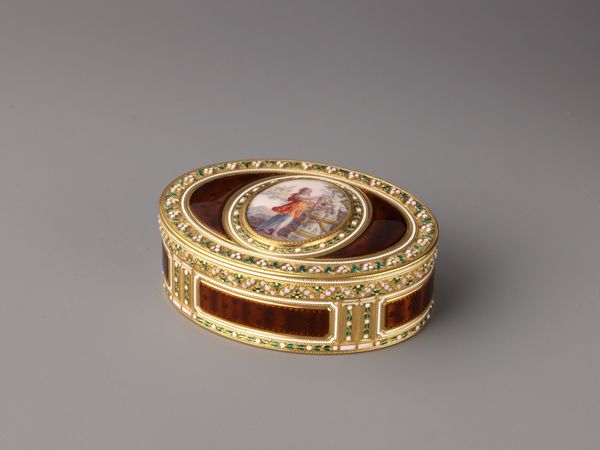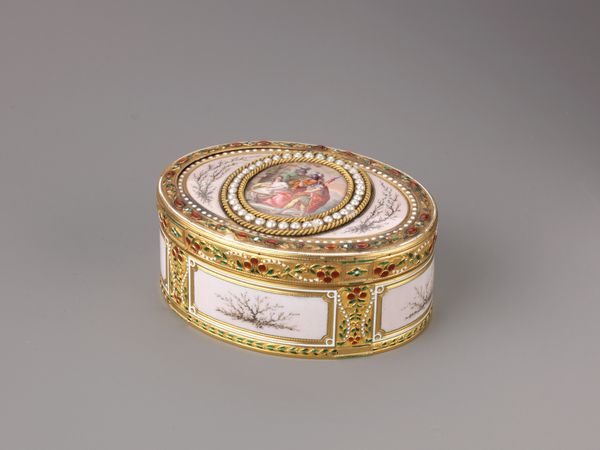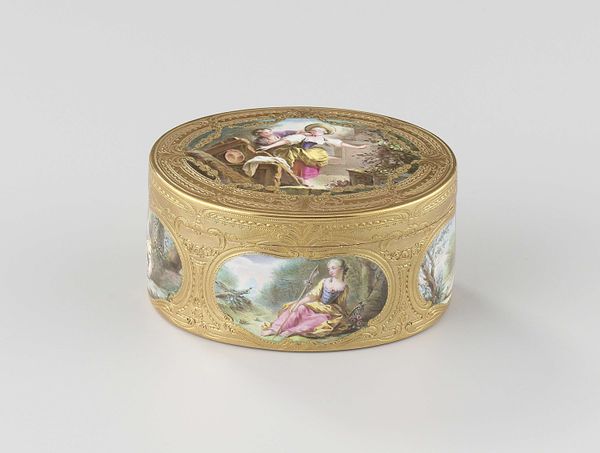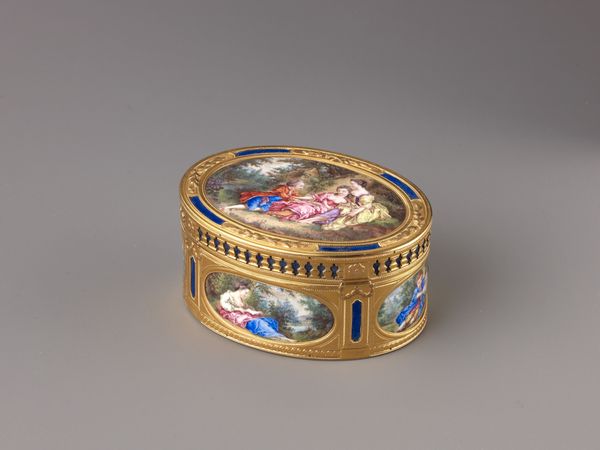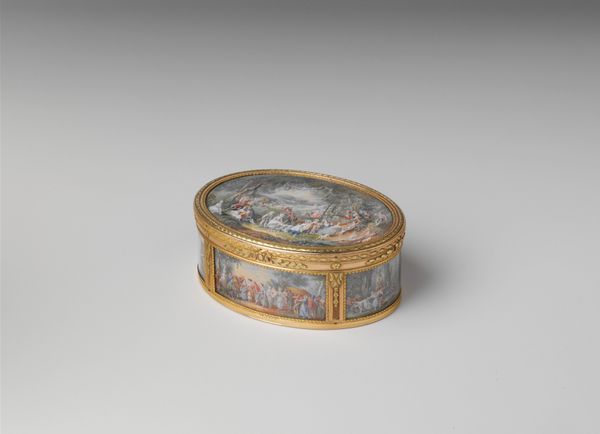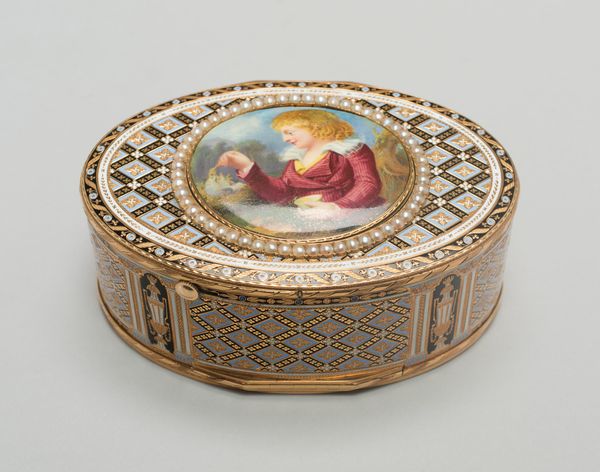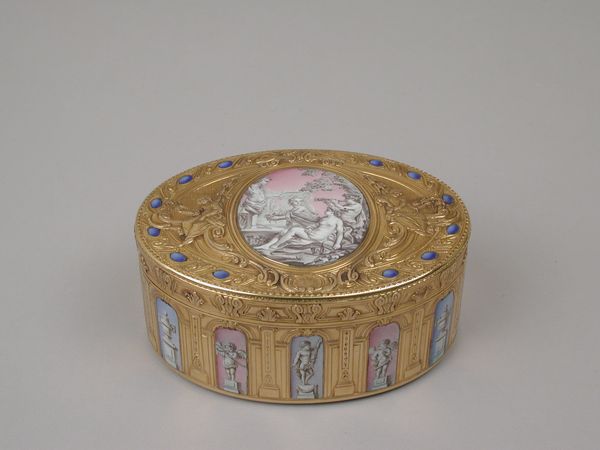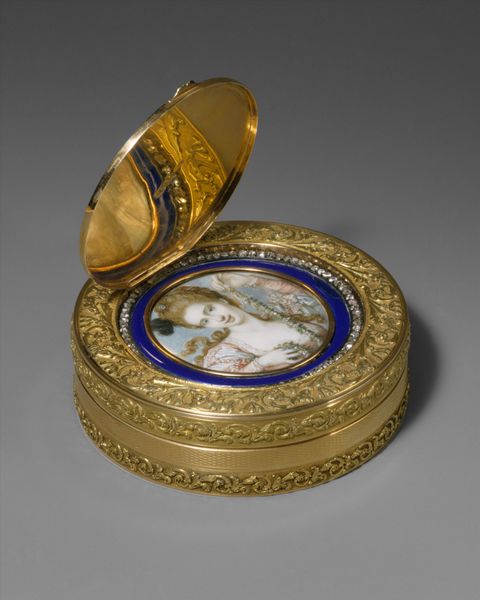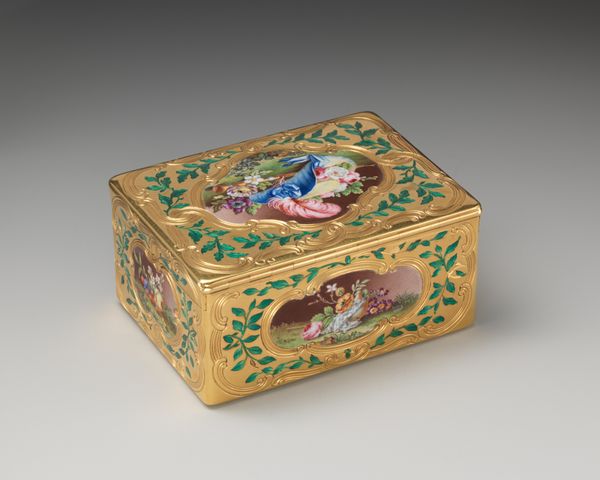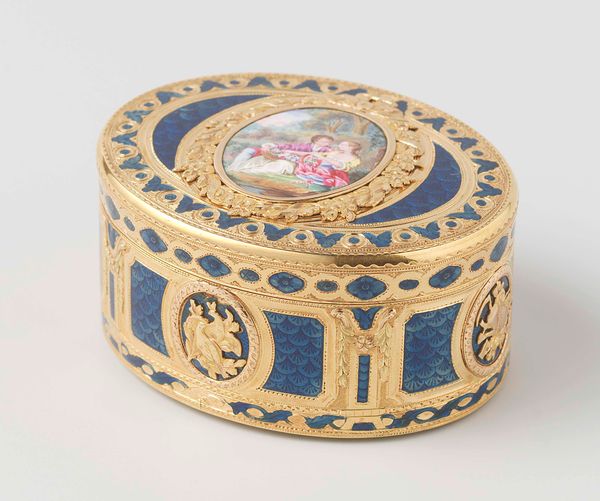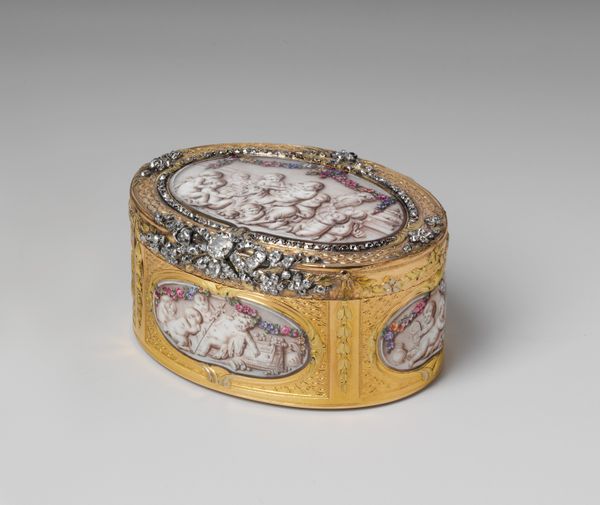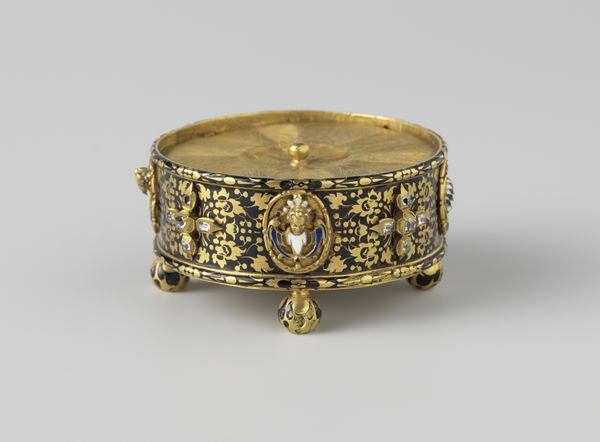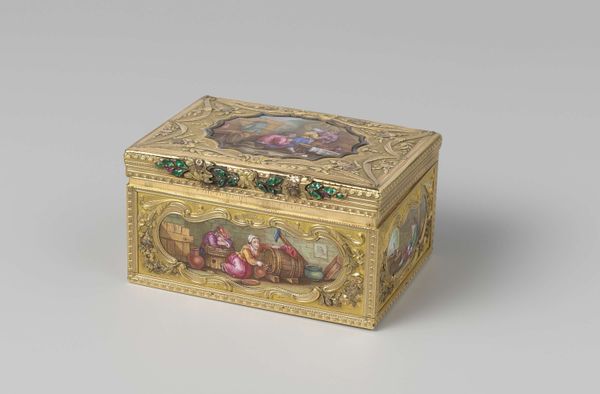
gold, sculpture, enamel
#
portrait
#
gold
#
sculpture
#
enamel
#
miniature
#
rococo
Dimensions: Overall: 1 5/8 × 3 5/16 × 2 1/2 in. (4.1 × 8.4 × 6.4 cm)
Copyright: Public Domain
Curator: Let’s turn our attention to this remarkable object: a gold snuffbox created around 1769-1770 by Jean-Joseph Barrière. Editor: Wow, it’s… excessive. Opulent, even. It feels very removed from any sort of lived experience for the average person. Who was actually using this? Curator: The piece, now housed in the Metropolitan Museum of Art, is a beautiful example of rococo craftsmanship. Gold, enamel, miniature paintings, and intricate sculptural details all come together. Thinking materially, the craftsmanship involved would have been intensely laborious, a concentrated effort to produce something quite divorced from any functional need. Editor: Absolutely. And the very act of possessing something like this broadcasts immense wealth and privilege. Who were the intended consumers for something this lavish? Surely it was only for the aristocratic elite. This isn't merely a decorative object. It's a powerful symbol of class and social hierarchy, speaking volumes about the vast disparities of the time. And let's not forget, these exquisite objects were financed and produced during a time of enormous social inequality in prerevolutionary France. Curator: I see your point entirely. These luxurious snuffboxes, used to carry and dispense powdered tobacco, became potent signifiers of status in 18th-century Europe. Snuff-taking became a social ritual. Consider the time it would take to not just produce but maintain an item such as this. It speaks to the kind of courtly existence afforded the upper class, with servants, artisans, and all of the elements needed to prop up a culture of excess. Editor: Precisely. And the imagery adorning the box itself - those playful cupids and idealized pastoral scenes - serve as a kind of ideological reinforcement. This reinforces notions of leisure, romance, and carefree enjoyment as the exclusive domain of the upper class. We need to unpack the power dynamics embedded in seemingly innocuous luxury objects. Curator: Well, it does make you reconsider the societal implications tied into art and object making. It really underscores the idea that artworks are never created in a vacuum. Editor: Exactly. By considering the broader socio-political context we’re equipped to decode these artifacts for clues on class, gender, and power in past societies.
Comments
No comments
Be the first to comment and join the conversation on the ultimate creative platform.
